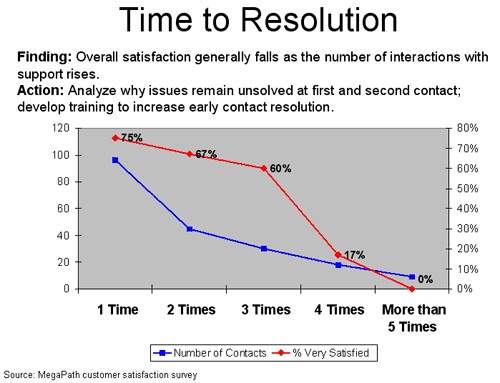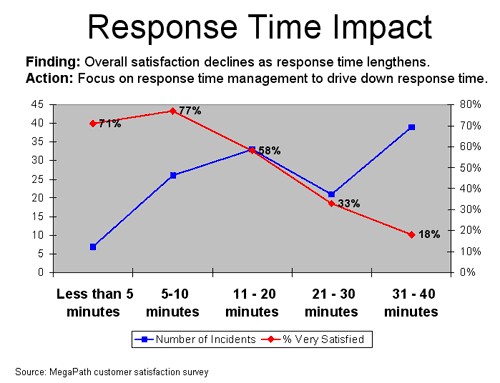|
|
DSC Tech Library
Customer Relationship Management
 This section of our technical library presents information and documentation relating to CRM Solutions and customer relationship management software and products.
Providing timely customer service information is vital to maintaining a successful business. Accurate information provided in an organized and thoughtful manner is key to business success.
This section of our technical library presents information and documentation relating to CRM Solutions and customer relationship management software and products.
Providing timely customer service information is vital to maintaining a successful business. Accurate information provided in an organized and thoughtful manner is key to business success.
TELEMATION, our CRM and contact center software, was originally built on this foundation. The ability to modify Customer Relationship Management software is important in this ever changing business environment.
Telemation Customer Relationship Management solution and contact center software is ideally suited for call centers throughout the world.
Leveraging Customer Feedback to Build Loyalty
By Teri Robinson
This case study is based on a presentation by Adrienne Dale at CRMGuru's annual conference, the CustomerThink Executive Summit 2003.
The Business Case:
MegaPath Networks delivers secure access and managed network solutions that enable businesses of all sizes to cost-effectively connect branch offices, mobile workers and home-based workers to centralized corporate resources. MegaPath wanted to get a solid fix on customer feedback and find a way to translate it into loyalty.
When Adrienne Dale joined the company, she brought with her a great deal of experience about establishing a formal survey process for gaining customer satisfaction data as well as processes for analyzing and acting upon the data. As a result, MegaPath has been able to tie customer satisfaction levels to things such as response time to queries and number of interactions with supportóthen take appropriate action.
In her previous job, Adrienne Dale worked at a company that religiously captured customer satisfaction data but did "absolutely nothing with it," said Dale, who is now senior vice president at MegaPath Networks, Inc. and who brought the lessons learned and programs established in her prior employment to her current work environment.
Before she started at MegaPath, Dale devoted considerable effort to "marrying the customer satisfaction data with transactions and other data that we had to make actionable, get actionable data and get results," Dale said. When she got to MegaPath, the company didnít have a formal customer satisfaction program in place, but instead got feedback from customers in a more random fashion. "Because it was only random customers or those customers who felt so strongly that they proactively were going to contact us, either the feedback was diminished or it was inflated beyond its significance where we were jumping through hoops because of what one customer thought," she explained.
Develop a Formal Customer Satisfaction Survey
One of her first moves was to implement a formal customer satisfaction survey program that allows the company to put the information in context so the company response could be appropriate to the feedback. First and foremost, she developed a survey that focused "on the customers of the company as a whole, sort of resist the pressure or weíre being seduced, and weíre just going to survey this little bit." She needed to see how the sales operation was doing, so Iím just going to survey the sales operations piece, "When a customerís giving you feedback, get the whole picture, understand as much as you can," she advised.
But, she cautioned, the information had to be linked up to transactions so it has meaning and is traceable.(See graphics below) Frequency of data collection is critical, too. "Something thatís once a month just feels glacial, and if itís slower than that, goshÖagain, in contrast, if you have very large accounts with really big relationships, once a quarter, twice a year is probably enough, and you need a little time, your changes, because youíve got now your ocean liner, are going to be slower," Dale said.


Dale noted that when designing a survey, a company must keep its end objectives in mind. Really key is your designing your survey program is, identify what are your end objectives? "What do you want to be able to measure, and build that in? If you havenít designed that up front, youíre going to find yourself frustrated that, gee, I want to answer this question but I canít connect all the dots, and very simple stuff, but map the data sources," she contended. And companies should ensure that the length and tone of a survey doesnít turn customers off.
Itís Not Just What You Do, But the Way You Do It
The mechanism, too, has an impact. Online surveys are fine though "it doesnít work for every industry, but when it does, itís the best way to go. The invitation is important. How do you solicit customers to participate?" she said. ďAnd, it should be a very personal message over the signature of the highest level involved executive.Ē
Currently, MegaPath is using RightNow Technology Metrics and, Dale noted, "thereís a lot of great companies out there. This is a really cost effective way to go."
No matter what vendor solution is selected, Dale urged companies to look for certain features. "You want to look for are build-it-yourself questionnaires so that youíre not having to stand in line to get somebody to build it for you plus pay them for it," she said. "Online statistical and graphical reports, you should be able to get that out of whatever product youíre using, and the ability to download that data so you can do more with it, because youíll find that once you get going, thereís more you want to do."
While granular data can let companies drill down to individual situations, it can be overwhelming. "Itís real easy to just get lost in those details, so an important balance is to look for patterns and rise up to say, 30,000 feet."
Analyze the Data
Once collected, a company can scrimp on analysis. "You have to commit resources to this," said Dale. "Whatís the point of saying, 'Oh, our customer satisfaction is X, or customer loyalty factor is Y,' if youíre not tying it to things that you can then do something about."
And Dale cautioned that CVM is "a continual thing. With any kind of satisfaction or loyal improvement effort, it is continuous, it takes relentless effort and sustained focus," said Dale. "Thereís no joke here, itís just a lot of hard work, and you have to be ready for that. 'OK, weíre going to look at the data once a week, weíre going to look at the data every other week, weíre going to look at the trends, weíre going to roll things up.' And when these kinds of issues come to us, we need to develop knowledge so weíre handling it better, so that regardless who fields that call, who interacts with that customer, weíre telling them the best answer, the best solution, the first time, that may be a knowledge issue, so if you have a knowledge development team, that would be their baby."
Dale encouraged companies to coach and train employees so they are all on the same page when it comes to dealing with information and different scenarios. "What Iíve done and at MegaPath and at companies before, is that this is something that once a week, a group of people cross-functional looking at the data, with everyone coming back, 'Look, hereís my action,' and doing something where theyíre putting that into action fast enough like tomorrow or the next day, so that by the time we meet next week or maybe if youíre in a slightly slower cycle, in two weeks, we can see, did what you do make a difference? Do we need to fine tune it? You know, thatís why Iím talking about that rapid response, rapid action, fast rapid feedback so you actually can make some changes."
Without rapid response, parts of the company can become frustrated. They will feel "like operations is dragging down all our efforts to increase customer loyalty and to increase our stickiness with our customers, why are they moving so slow, so itís a real big imperative that you are getting the data fast enough, acting fast, and then getting that feedback on the impact of the actions that you were taking," she said.
Overall, though, relentless focus is critical. "It is just never ending, it canít be OK, this quarter weíre going to do customer satisfaction, itís week after week, and really, for your frontline people, itís day after day, hour after hour. It has to be something thatís in their brains, that constant feedback, and itís feedback as fast as possible, hereís what you heard, this is what customers are saying about you, really important for people to have that."
Sidebar: Step By Step
Turn measurement into results
Cost-effective and easy to use: web-based surveys
E-mail invitation over signature of highest-level involved executive (VP or above)
- Affirm commitment to customer satisfaction and ask for feedback
- Include link to on-line survey and opt-out link
Ensure completed surveys are tied to customer contact record ID for tracking and analysis
Establish a continuous process
Establish a continuous quality improvement process
On an on-going basis, consolidate and present current results and trends
Identify correlations between satisfaction and loyalty to other factors
- Product
- Issue type
- Response time
Search for patterns Ė 30,000 ft view
Seek actionable data Ė ground-level view Ė details, details, details.
|


 This section of our technical library presents information and documentation relating to CRM Solutions and customer relationship management software and products.
Providing timely customer service information is vital to maintaining a successful business. Accurate information provided in an organized and thoughtful manner is key to business success.
This section of our technical library presents information and documentation relating to CRM Solutions and customer relationship management software and products.
Providing timely customer service information is vital to maintaining a successful business. Accurate information provided in an organized and thoughtful manner is key to business success.

